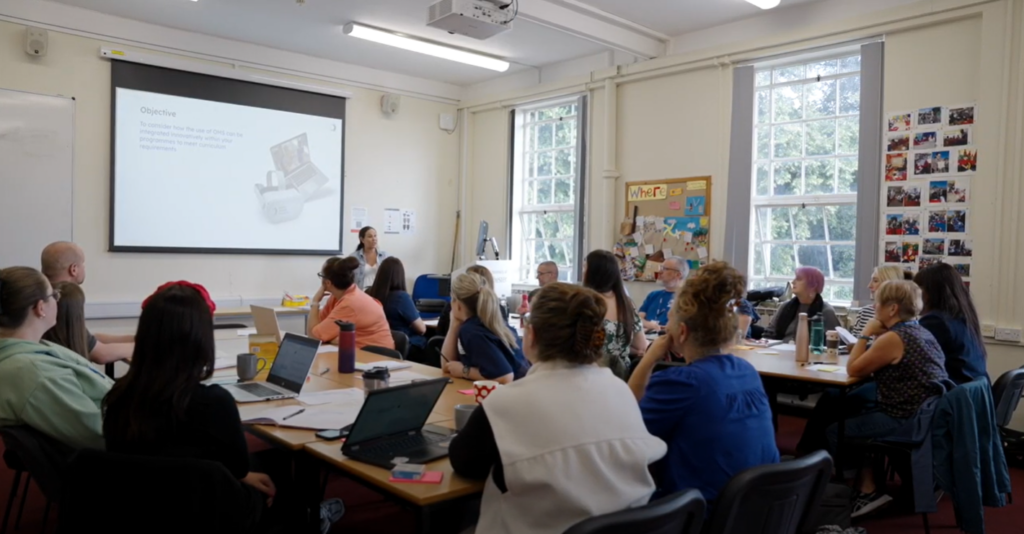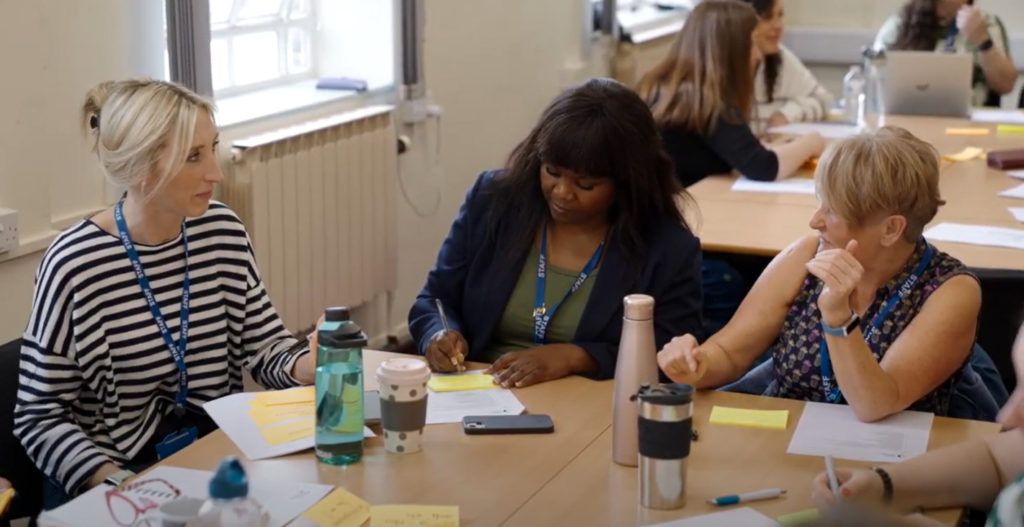Time flies – and it seems like technology is advancing at warp speed.
Children growing up with this new set of technology, like Chat GPT and VR gaming, are likely to have expectations around its use in their education, as well.
With that in mind as a wave of the future nursing generation, alongside the current issue of the national nursing shortage, adapting new technology to enhance learners’ experiences is top of mind for forward-thinking educators like the team at the University of Chester.
Early on, the faculty team identified the need for innovative ways to conduct student placement experiences while meeting the educational needs of their learners.
To create real world clinical situations that reflect the ward environment and cement the lifelong reflection needed for nursing, the team at Chester began their work in incorporating virtual reality scenarios into their clinical education program.
Using OMS
The nursing program at the University of Chester has embedded VR simulations into their program over the last three years.
From skills sessions to full practice simulations, students in the nursing school have been using OMS scenarios to enhance their skills and build confidence in their clinical performance.
Faculty incorporate VR into their curriculum in a number of ways to support learning objectives.
For example, as part of a practice learning module, students first receive a didactic lesson outlining skills they’ll be learning as a part of the module.
Complementing didactic learning
Then, learners gain access to an OMS Neuro scenario, which they run independently, receiving immediate feedback following their simulation.
After reviewing their feedback, students then go into the skills lab and conduct a similar simulation with a manikin.
When students go back into the lab for physical simulation, faculty have seen marked improvements when learners get access to a VR simulation first. Sonia Boulton, Senior Lecturer in Adult Nursing saw that after going through the OMS scenarios, learners “were able to bring out the correct airway for the patient straight away because they’d learned it in the first OMS scenario.”
Using VR scenarios to support both didactic and physical simulation further cements the application of theory to practice and builds student confidence.
Simulated clinical placements
For more advanced learners in their second year, simulated clinical placement hours are conducted via VR simulations.
In this series, learners work through 10 nursing scenarios.
They work through two scenarios per day. The first is conducted at home so learners can work at their own pace and self-reflect on feedback. Then, students are able to have a second opportunity to put feedback into practice.
Following the scenarios, learners and faculty debrief at the end of each day to discuss major takeaways, anything they would have done differently, and to reflect on how this simulation is reflective of real world practice.
At the end of the week, students provide their own reflections and demonstrate what they’ve learned over the course of the week.
As a result of this method, learners are able to receive sign off on their proficiencies and skills, providing an innovative avenue to conduct clinical placements for students.

Impact for learners
Implementing this tech is meant to support learners, so collecting student feedback has been vital in the process for the faculty in the nursing program.
Students appreciate the fundamentals of the platform, like receiving an objective score they can improve on and having access to guidelines within the scenarios themselves.
From a practice perspective, learners highlight the repeatability of the simulations, as this helps learners to work at their own pace and practice simulation as much as they need on an individual basis.
Between scenarios, learners are able to read up and refresh their understanding of skills or concepts. Lecturer in Acute Adult Care Nursing, Tom Rippon, notes this allows them to “critically think more effectively” in-the-moment.
According to Sonia Boulton, Senior Lecturer, these VR scenarios are “preparing students because it provides a safe environment where they can make a mistake before they go out into clinical practice.”
Both students and faculty have also cited the analytics they have access to as a way to further bolster their understanding and clinical performance.
Learners can track their progress in their clinical performance and skills while educators get a snapshot of how learners are engaging with scenarios and how well they’re improving, identifying any trends on a cohort level.

Future plans
As the team at Chester look to grow their VR program, Andrea Jones, who works in simulation for 2nd & 3rd year nursing students, has a bit of advice:
“Go for it! Don’t let technology fear hold you back.”
The faculty here stress the importance of spending time with the technology going out to students to help them navigate the environment and get the most out of the learning experience.
For their own program, the faculty in the nursing program are currently looking into researching the use of VR and its effectiveness in preparing students for practice.
Another next step for the nursing program will be incorporating interprofessional teamwork scenarios with other disciplines at the university for the multidisciplinary communication and efficient teamwork needed in the clinical setting.
Where do the faculty see VR going from here?
“Sky’s the limit!”
